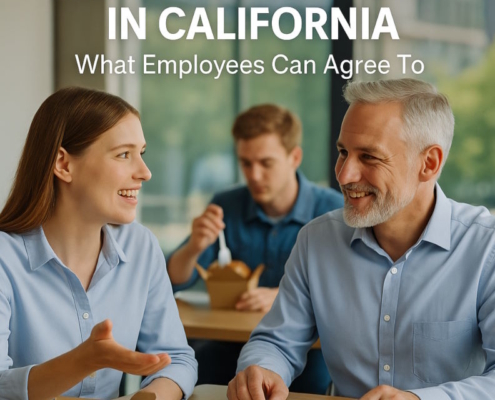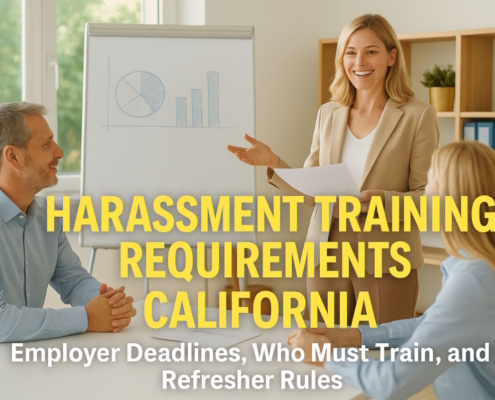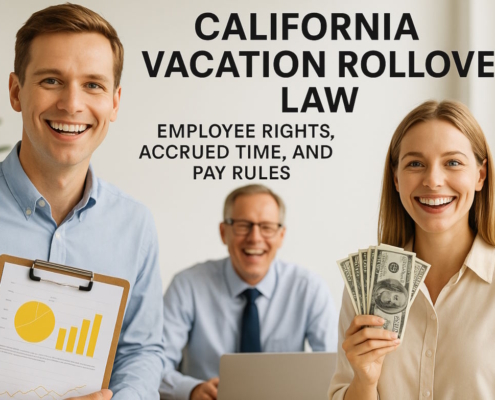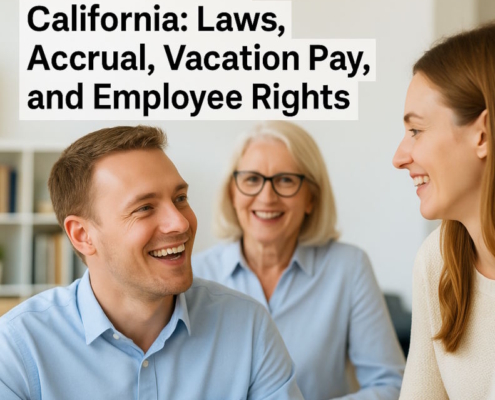Gender Discrimination California
California prohibits gender discrimination. It is unlawful for employers to discriminate based on gender, childbirth, pregnancy or conditions related to birth or pregnancy, gender identity, or gender expression.
By Douglas Wade, Attorney
Email | Call (800) 484-4610
Get Smarter. Search FAQs.
What is California’s stance on gender discrimination?
In recent years, the state of California has emerged as a trailblazer in promoting progressive discrimination laws aimed at fostering a more inclusive and equitable society. With a firm commitment to protecting the rights of its diverse population, California has spearheaded groundbreaking legislation to combat gender discrimination. Notably, the state’s Department of Fair Employment and Housing (DFEH) enacted a series of regulations in 2017 that address key areas such as restroom facilities, dress standards, transitioning, preferred name and identity, and documentation. These regulations have ushered in a new era of empowerment and recognition for individuals of all gender identities, positioning California as a frontrunner in the fight for equality and social justice.
California’s 2017 DFEH regulations marked a significant turning point in the state’s efforts to dismantle gender discrimination and provide comprehensive protections for transgender and non-binary individuals. One of the central areas of focus was restroom facilities, recognizing the importance of ensuring safe and accessible spaces for all Californians. The regulations require employers to provide equal access to restrooms based on an individual’s gender identity rather than their assigned sex at birth, offering an unprecedented level of inclusivity within the workplace.
Further, the DFEH regulations addressed discriminatory dress standards by explicitly stating that employers cannot enforce dress codes that discriminate based on gender identity or expression. This provision ensures that individuals have the freedom to express their gender identity authentically without fear of discrimination or retribution. By embracing diversity in dress and appearance, California is cultivating a more inclusive and accepting environment across various sectors.
Recognizing the unique challenges faced by transgender and non-binary individuals, the DFEH regulations also emphasize the importance of accommodating transitioning employees. Employers are required to provide reasonable accommodations for employees transitioning in the workplace, including access to appropriate facilities and leave for medical procedures related to transitioning. These provisions acknowledge the rights of individuals to pursue their authentic selves while balancing their professional responsibilities.
In addition to addressing physical accommodations, California’s progressive regulations extend to recognizing an individual’s preferred name and identity. Employers must respect an individual’s gender identity by using their preferred name and pronouns in all employment-related matters. This shift promotes an atmosphere of respect and dignity, fostering a more inclusive work environment where individuals can feel seen, acknowledged, and valued.
Lastly, the DFEH regulations acknowledge the challenges that individuals may face when trying to align their official documentation with their gender identity. To ease this burden, the regulations emphasize that employers must allow employees to identify themselves using their preferred gender on employment-related documents, such as personnel records and identification badges. By providing options for self-identification, California is taking crucial steps to eliminate unnecessary hurdles and promote authentic representation.
What is Gender Discrimination in California?
Many employees and employers have important questions about California’s gender discrimination laws and the United States’ federal policies and rules.
In California, gender discrimination laws are more complicated for employees and employers than in other states.
For example, as of 2023, California now asks employers to consider transgender identity and transgender expression when creating workplace discrimination policies and rules.
These new regulations work to broaden the Fair Employment and Housing Act by detailing new policies that California businesses are required to incorporate.
These relatively new policies correspond to many important workplace concepts, including:
- Employee documentation
- Name and Identity
- Gender transitioning
- Standards of dress
- Bathroom facilities
Our employment litigator for employers defense encourages California employers and workers should be aware of California’s evolving gender discrimination laws and understand how the policies could impact them. Unfortunately, when employees and employers do not understand these new policies, they often find themselves caught on the wrong side of discrimination cases, even when they were unaware they did anything wrong.
Both employees and employers in California have rights, and a qualified attorney can help both groups understand California’s complex gender discrimination policies.
In this article, we will outline California’s gender discrimination policies and laws and discuss how employers and employees should deal with gender discrimination cases in the workplace.
What Should I Know About Gender Identity?
The terms used in gender discrimination identity are constantly evolving, especially in California. Let’s review some key terms and their definitions to keep employers and employees in the know.
- Gender Identity: How an individual identifies, regardless of their outward appearance or assigned sex
- Gender Expression: An individual’s gender-related behavior or appearance. This concept is also not connected with the individual’s assigned birth sex.
- Transitioning: The process an individual goes through to begin living as the gender they identify with. This concept may include name changes, new pronoun usage, facility usage, surgery, hormone therapy, and more.
- Transgender: An individual whose assumed gender differs from their birth gender. A transgender person may or may not identify as “transsexual. They also may or may not assume an expressed gender different from the social expectations of the sex given to them at birth.
- Sex Stereotype: An assumption or judgment made about a person’s appearance or behavior, gender expression, gender identity, gender roles, or their ability or inability to perform specific jobs based on social expectations, stereotypes, or generalizations about the person’s more traditional or accepted sex
Why is it important for California’s employers and employees to understand these terms? First, consulting with a small business attorney in California can help employers successfully enforce California’s gender discrimination policies and laws and avoid making offensive or costly mistakes.
Understanding these terms helps employees understand each other more effectively and work together as individuals on projects and teams.
Understanding the different natures of the people around us and the complexity of the world around us helps employees and employers encourage safe, tolerant environments in the workplace.
What Are the Discrimination Laws in California?
Workplace discrimination can be a difficult thing to identify clearly. Sometimes, people feel unfairly targeted, but they are not. On the other hand, sometimes workplace discrimination is unchecked, and no one is there to ensure people’s safety and security.
California’s state laws are created to protect:
- Employees from discrimination
- Employers from unjust discrimination suits
In addition, several federal laws in the US intend to keep both employees and their employers safe from both prejudice and wrongful accusations.
Let’s look at three important works of legislation that directly impact California employees dealing with gender discrimination.
- California’s Fair Employment and Housing Act (FEHA) applies to:
- Labor organizations
- Public and private employers
- Employment agencies
The law protects several specific groups from discrimination, including:
- Contractors
- Unpaid interns
- Job applicants
- Volunteers
- Workers
This law also favors employees who reside in California.
- Title VII protects employees from discriminatory behavior and applies to:
- Race
- Color
- Sex
- Religion
- National origin
This protection is related to the worker’s compensation, conditions, terms, and privileges of employment.
This law prohibits employers from discriminating against workers based on the following:
- Pay
- Benefits
- Apprenticeship or training programs
- Testing
- Firing, recruiting, hiring
- Promotions, transfers, layoffs, recalls
- Employment advertising
- Retirement pay, benefits, bonuses
- Any other terms and conditions that differentiate based on gender
- The Equal Pay Act of 1963 expands on Title VII of the Civil Rights Act of 1964. However, the Equal Pay Act differs in that it stringently protects against wage discrimination.
What Are the Differences Between Federal and State Laws Regarding Discrimination?
In this case, federal law includes businesses with 15 or more employees. State laws include companies with five or more workers. It is also important for employers and employees to know that state law includes only the state. Federal laws include federal, state, and local organizations and agencies.
What is Considered Gender Discrimination in the Workplace?
Gender discrimination often challenges employees, employers, and lawyers, no matter which side of the case or issue they find themselves on. Workplace discrimination dealing with gender is challenging to prove and difficult to identify.
This difficulty occurs because obvious cases of gender discrimination are relatively rare, and these policies or this behavior are usually more subtle and nuanced.
For example, if an email is sent out to all female employees dictating that maternity leave will be unavailable, that is blatant gender discrimination. We could also reverse the example and have the email go to all males and say that paternity leave is banned. These would be clear incidences of discrimination based on gender and gender-related conditions.
However, most gender discrimination is not as obvious, and the legal cases are therefore not as simple.
Here are some common examples of gender discrimination in the workplace so employees and employers know what to look for when identifying this type of behavior.
- Holding back job opportunities because of a worker’s gender expression or gender identity.
- Promoting a person only based on their gender or hiring or terminating them
- Refusing to promote, hire, or terminate an employee strictly only based on their gender
- If a worker cannot add their spouse’s death to their insurance plan because it is assumed or implied that their spouse—in this case, male—earns their benefits
- Salary or pay discrimination among employees with the same duties, experience, qualifications
- Reducing an individual’s salary because of their gender
- Requiring a certain gender to take a hiring test—physical or mental—that the other gender does not need to take
- A superior favoring an employee based on their gender
- A superior refusing to allow an employee into certain offices or areas of the office based on their gender
- Being made fun of by an employee is a woman, a man, or transgender.
In California, we understand that gender discrimination happens to everyone, including:
- Males
- Females
- Transgender individuals
- Gay people
Additionally, gender discrimination does not always involve pay, hiring, terminations, or benefits. Sometimes, gender discrimination involves harassment, illicit behavior, and inappropriate jokes or actions based solely on someone’s gender.
How Do I Report Gender Discrimination at Work?
Employers and employees alike are busy, and sometimes it may appear to them that reporting workplace gender discrimination will create more hassle and legal problems than it is worth.
This approach is problematic since gender discrimination can not only damage the culture of the workplace, it can impact individuals very harshly. Employers should never let their workers suffer emotionally, psychologically, or physically; instead, they should immediately stop wrongful behavior. Gender discrimination can be challenging to identify, so when people think they witness this behavior, they should tell peers or superiors about it and build awareness.
This idea of stopping discrimination early goes for both employers and employees. When workers witness wrongful behavior by their peers, supervisors, or managers, they cannot just let it slide. A business that becomes infected by discrimination cannot accomplish its goals. When people feel that discrimination is tolerated or even accepted, they will perpetuate these actions more and more. Therefore, if you suspect gender discrimination at work, be proactive. Immediately report the incident to a supervisor or manager, and make a note of it. Businesses must work to maintain gender equality in the workplace in California.
When Should I Contact a Employment Litigation Attorney?
At Nakase Wade, we look forward to discussing your concerns about gender discrimination in the workplace. Whether you are an employee who has been victimized, a worker who has witnessed discriminatory behavior, or an employer who is wrongfully accused, we look forward to defending your rights.
We offer free consultations, so contact our California discrimination attorneys and employment lawyers today. At Nakase Wade, we strongly believe that employers cannot and not mistreat employees based on their gender, and we will help our clients not only deal with discrimination but overcome it so they can move forward.
Learn more about: Business | Corporate | Employment
See all articles: Business | Corporate | Employment
































